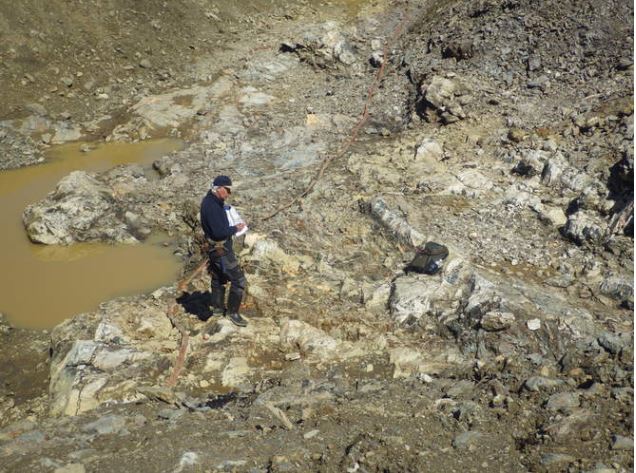Altius makes Manitoba diamond discovery

Prospecting on the Alder Zone at the Wilding Lake gold project in central Newfoundland. Source: Altius Minerals Corp.
Altius Minerals Corp. [ALS-TSX] has reported the discovery of micro and macro-diamonds on its wholly-owned 60,816-hectare Lynx Diamonds Project located near the community of Oxford House, northeast Manitoba.

Altius optioned the project from a consortium of prospectors and geologists who worked in conjunction with the Manitoba Geological Survey (MGS) in 2016 to study the potential of the Knee Lake area to host diamonds. This is an area of the province which has been recognized historically for its abundance of kimberlite indicator minerals (KIMS) in till but for which no known source of KIMS or diamonds had been identified. A single 15.8-kilogram sample collected and analyzed by microdiamond analysis (MiDA) by these workers from the Project’s Eastern Bay zone contained 144 micro-diamonds and was reported in early 2017.
The diamondiferous host units are interpreted as part of an extensive volcaniclastic sequence of ultramafic composition that is potentially diatreme associated. Prior to the positive results of the MiDA work, the diamondiferous rock unit was recently recognized and reported for its diamond potential by the MGS.
These units are mapped as occurring over a strike length of approximately 4 kilometres and up to 200 metres in width at the Eastern Bay zone and based upon archived airborne magnetic data are inferred to extend at least several kilometres further south. The nature of these units, and in particular the potential scale of the diamond bearing rocks, make this prospect unique when compared to typical kimberlite-hosted diamond deposits in Canada and other parts of the world.
During June-July Altius collected 23 additional outcrop channel and grab samples (16 kilograms each) from various parts of the project and submitted these for MiDA. All 11 samples collected from the Eastern Bay Zone were diamondiferous – yielding between 34 and 303 micro-diamonds per sample (grab and channel samples reported here are selective and may not be representative of the mineralization on this property).
From these 11 Eastern Bay Zone samples a total of 1,149 micro-diamonds in the +0.106 mm to +0.850 mm size fraction were recovered from a total of 176 kg of outcrop sample material. Eight of the diamonds are considered macros with a dimension of at least 0.5 mm, with the largest stone having a long axis of 1.42 mm. Descriptions for all stones larger than 0.3 mm indicate that 24% of the stones are white/colourless and 45% are off-white while 17% are octahedral. Refer to company press release for more details on diamonds.
Nine samples were also collected along the Western Bay Zone which is interpreted as a related parallel sequence that occurs approximately 3 km west of the Eastern Bay Zone. Five micro-diamonds were identified in two samples from Western Bay.
A single sample collected approximately 15 km west of Eastern Bay yielded 44 microdiamonds in a relatively fine grained volcaniclastic sequence, and is interpreted to be relatively more distal from the source than the Eastern Bay zone. Ongoing geological studies are required to ascertain the effect of the volcanic and sedimentary depositional environment and the potential natural sorting and overall distribution of diamonds in these rocks.
The company plans to undertake further investigative work in the coming weeks to further assess the potential of this new discovery, including field mapping, additional MiDA sampling, indicator mineral abundance and composition studies, petrography and potential mini-bulk sampling for the purposes of recovering possible macro-diamonds.
An application has also been filed for 60,268 hectares of new mineral exploration licenses adjacent to the current project that cover potential extensions of the prospective rock units.
